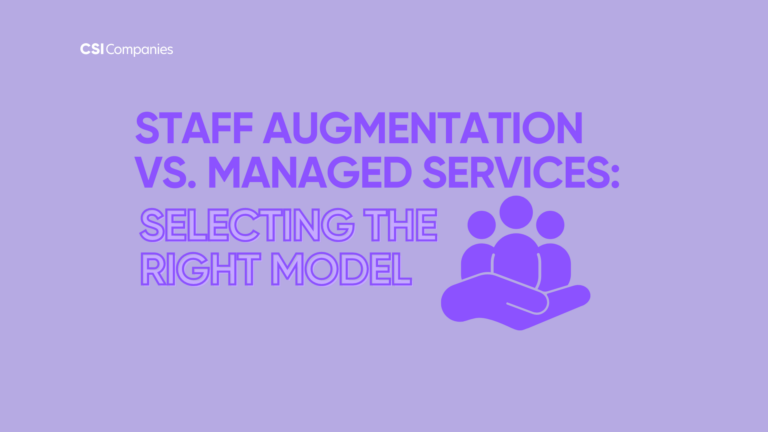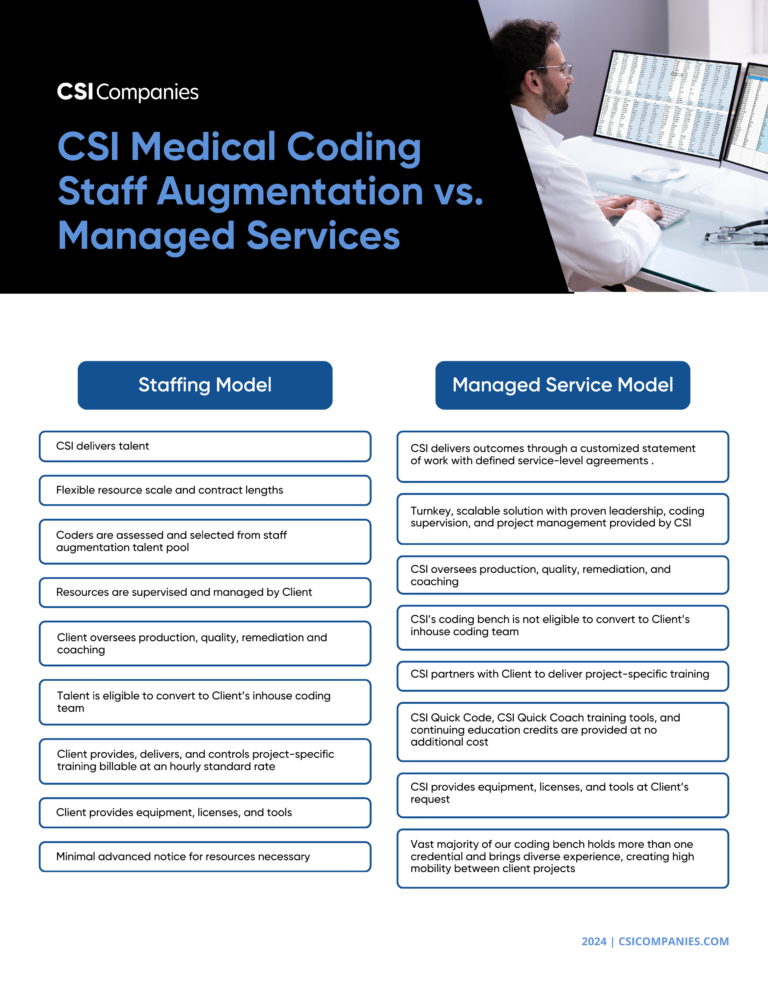Staff Augmentation vs. Managed Services
Selecting the Right Model

Both managed services and staff augmentation models are widely utilized resources for business growth in the modern world. While both have their merits, it is essential to recognize that different problems call for different solutions. Understanding the advantages and disadvantages of each model is crucial for achieving success. Optimal productivity can be achieved by selecting the model that aligns with an organization’s workforce, specific needs and objectives, and budget.
Hiring
When it comes to hiring, staff augmentation is recognized for its flexibility and effectiveness in talent sourcing for specific projects and periods. This approach enables companies to adjust their workforce as needed without excessive investment. Moreover, it serves as a bridge for permanent employment, allowing the possibility of transitioning temporary employees to full-time positions. On the other hand, the managed services model emphasizes delivering outcomes measured by service level commitments, through a customized statement of work. These candidates typically possess a diverse range of skills and expertise; however, they remain under the control of the supplying company and are not eligible to join the client’s in-house team.
Control
Since staff augmentation does not typically involve documented agreements on the work outcomes beyond providing the talent, responsibility falls on the client to manage and monitor these resources. This means the client must oversee production, quality, remediation, and coaching, and provide necessary equipment, licenses, and tools for the hired talent. In contrast, managed services offer a distinctly different dynamic. In this case, the client company completely transfers control and responsibilities to the supplying company, resulting in a more “complete” process and outcome. This allows the client to direct their focus towards other aspects of the business, with the peace of mind that employees and operations are being professionally handled. However, this all-inclusive approach naturally comes at a higher cost.
Cost
While staff augmentation offers the advantage of rapid access to talent temporarily, it does not typically involve service commitments tied to specific productivity. Instead, pricing is based on the number of hours worked. On the other hand, the managed services approach encompasses more risks, responsibilities, and resources, which gives it a higher price tag. The higher cost is justified by the clearly defined outcomes and service-level agreements that come with the managed services model.
Whether you opt for the short-term flexibility of staff augmentation services or the long-term commitment of managed services, establishing a strong partnership with the supplier is crucial. Both approaches have the potential to streamline your operations, save you time and money, and ultimately give you a competitive edge. The key lies in selecting the right process that aligns with your company’s unique needs and goals.
Ready for optimal efficiency? CSI Companies has your personalized solutions. Connect with one of our program experts at CCISolutions@csicompanies.com
